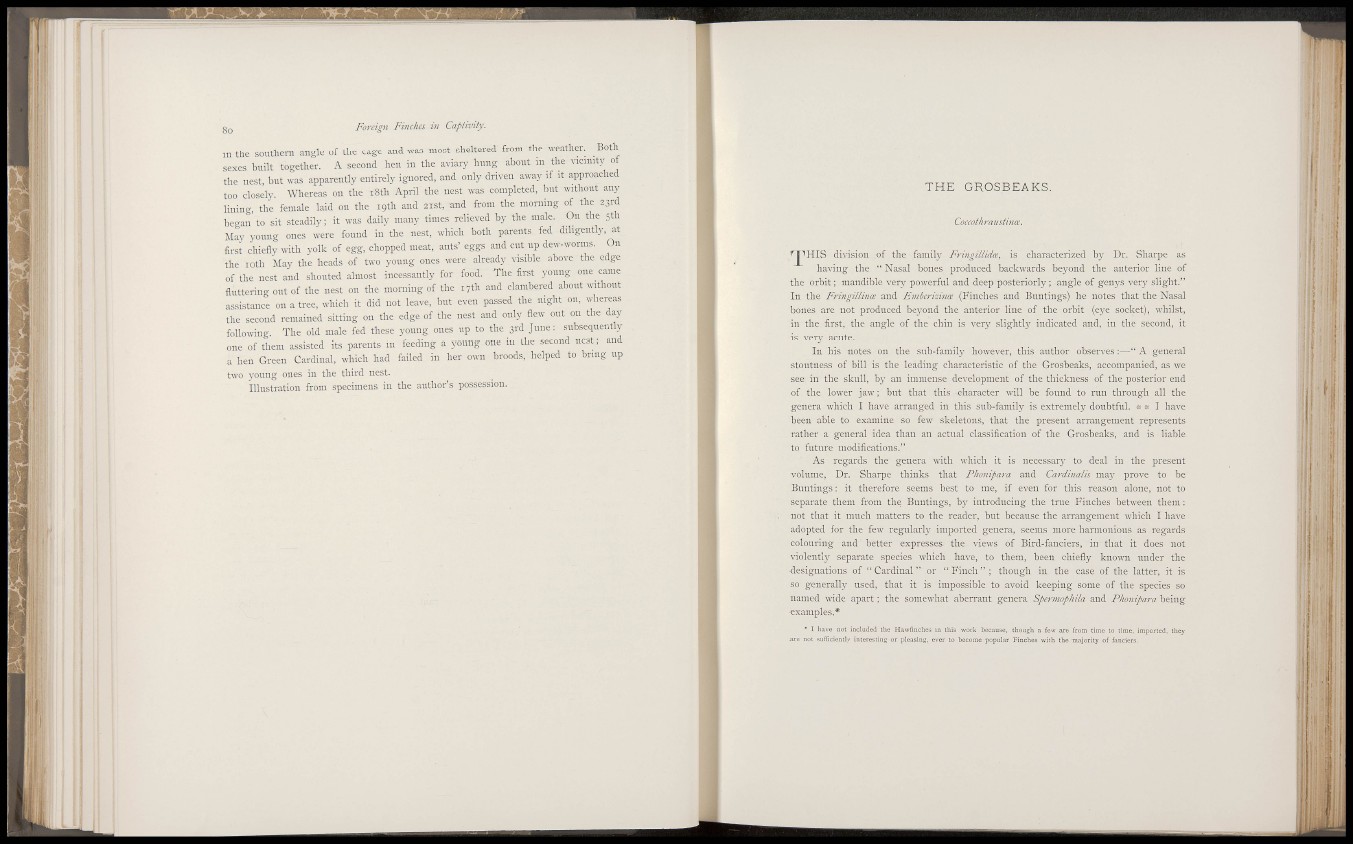
gQ Foreign Finchcs in Captivity.
in the southern angle of the cage and was most sheltered from the weather. Both
sexes built together. A second hen in the aviary hnng about in the vicinity ot
the nest bnt was apparently entirely ignored, and only driven away if it approached
too closely Whereas on the i8th April the nest was completed, but without any
linincr the female laid on the 19th and 21st, and from the morning of the 23rd
began to sit steadily ; it was daily many times relieved by the male. On the 5th
May young ones were found in the nest, which both parents fed diligently, at
first chieiiy with yolk of egg, chopped meat, ants' eggs and cut up dew-worms. On
the loth May the heads of two young ones were already visible above the edge
of the nest and shouted almost incessantly for food. The first young one came
fluttering out of the nest on the morning of the 17th and clambered about without
assistance on a tree, which it did not leave, but even passed the night on, whereas
the second remained sitting on the edge of the nest and only flew out on the day
following The old male fed these ^•ou^g ones up to the ard : subsequently
one of them assisted its parents in feeding a j-oung one in the second nest; and
a hen Green Cardinal, which had failed in her own broods, helped to bring up
two young ones in the third nest.
Illustration from specimens in the author's possession.
THE GROSBEAKS.
Coccothraiistincc.
division of the family Fringillidce, is characterized by Dr. Sharpe as
having the " Nasal bones produced backwards beyond the anterior line of
the orbit; mandible very powerful and deep posteriorly ; angle of genys very slight."
In the Fringillince and Emberizincc (Finches and Buntings) he notes that the Nasal
bones are not produced beyond the anterior line of the orbit (eye socket), whilst,
in the first, the angle of the chin is very slightly indicated and, in the second, it
is very acute.
In his notes on the sub-famil}' however, this author observes :—" A general
stoutness of bill is the leading characteristic of the Grosbeaks, accompanied, as we
see in the skull, b}' an immense development of the thickness of the posterior end
of the lower jaw; but that this character will be found to run through all the
genera which I have arranged in this sub-family is extremely doubtful. ® sf I have
been able to examine so few skeletons, that the present arrangement represents
rather a general idea than an actual classification of the Grosbeaks, and is liable
to future modifications."
As regards the genera with which it is necessary to deal in the present
volume. Dr. Sharpe thinks that Phoiiipara and Cardinalis inaj- prove to be
Buntings: it therefore seems best to me, if even for this reason alone, not to
separate them from the Buntings, by introducing the true Finches between them ;
not that it much matters to the reader, but because the arrangement which I have
adopted for the few regularly imported genera, seems more harmonious as regards
colouring and' better expresses the views of Bird-fanciers, in'that it does not
violently separate species which have, to them, been chiefly known under the
designations of "Cardinal" or "Finch"; though in the case of the latter, it is
so generally used, that it is impossible to avoid keeping some of the species so
named wide apart ; the somewhat aberrant genera Spermophila and Phonipara being
examples.*
• I have not included the Hawfinches in this worli because, though a few are from time to time, imported, they
•are not .sufficienlly interesting or pleasing, ever to become popular Finches with the majority of fanciers.
I !
' f
I
i
H